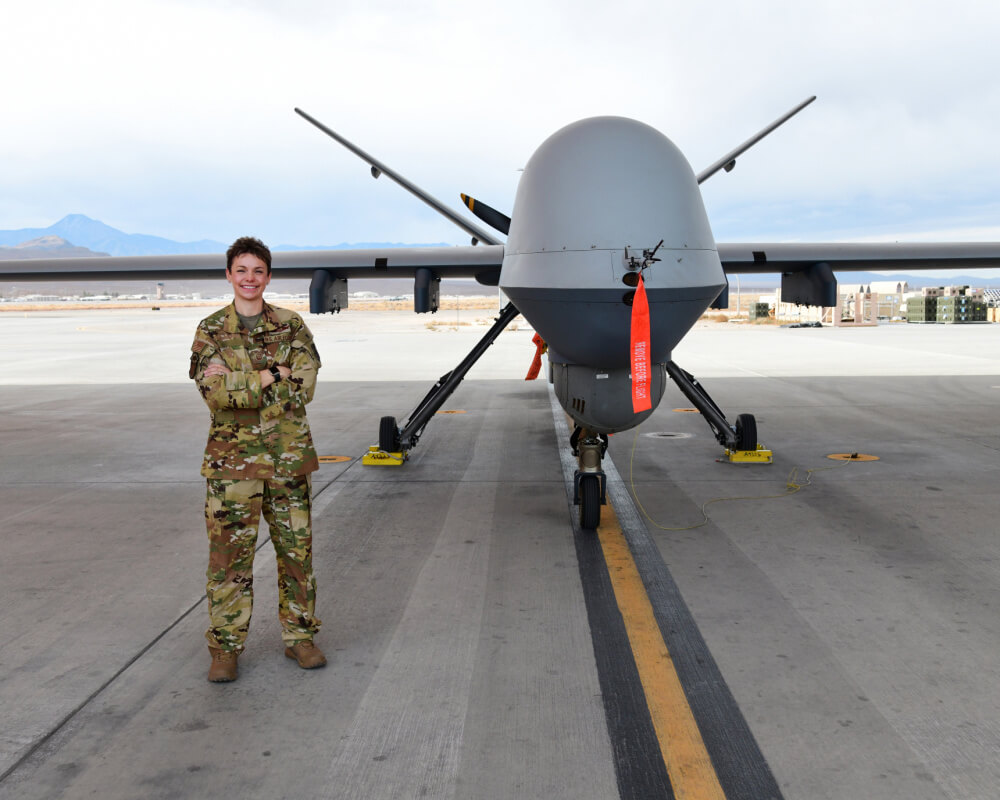An ongoing study that modernized Air Force height standards has widened eligibility to more than 40% of U.S. females – updating parameters that had been stagnant since the 1960s. Previous career-enlisted aviator (CEA) entry standards maintained a minimum height requirement of 64 inches, preventing 43% of females from enlisting.
Lt. Col. Edemumo Oboho, lead action officer for Air Education and Training Command Rated Diversity Improvement, said in an email that the time had come to update these standards. “As part of the Air Education and Training Commanders rated diversity effort, it was time for these requirements to be based on safety standards and ability to accomplish the mission rather than standards determined over 50 years ago.”
The following interim standards went into effect in March as part of a larger anthropometric study in which critical flying CEA fields and certain aircraft were surveyed:
- 58 to 80 inches for sensor operators and enlisted RPA pilots.
- 59 to 80 inches for airborne mission systems specialists, airborne cryptologic language analysts, and airborne ISR operators.
- 60 to 80 inches for inflight refueling specialists and flight attendants.
- 62 to 80 inches for flight engineers and special mission aviators.
- 63 to 80 inches for aircraft loadmasters.
The all-encompassing study began in August 2020, with the CEA aspect kicking off in February. Master Sgt. Jason Kornhauser, Headquarters’ Air Force Career Enlisted Aviators Anthropometric Project Officer, said in an email that the study is an opportunity to significantly decrease barriers for minorities, as well as a way to gather data for risk acceptance in safety of flight.
“The ongoing study results will provide a first-of-its-kind database that truly is groundbreaking with a focus on enlisted aircrew duties and positions, leveraging expanded recruitment talent the Air Force needs to win tomorrow’s fight,” he said.
Stature, according to Kornhauser, plays a critical role for CEAs. While pilots typically remain seated, several other roles require movement around the cabin.
“These roles are essential to the combat lethality of the aircraft and the safety of the crew, passengers, and the aircraft,” Kornhauser said. “However, stature is only one element of a safety standard.”
Lt. Col. Jessica Ruttenber, leader of the Women’s Initiatives Team, said in an email that her team championed and sourced funding for a CEA anthropometric project to update physical entry standards for enlisted aviators. Changes resulting from the study, according to Ruttenber, will reduce barriers and allow for a more diverse pool of potential recruits.
Kornhauser said the interim standards are rooted in safety while aiming to create a more lethal Air Force. Overall, he said the study will provide a scientific base for requirements that will enhance safety and diversify the Air Force.
A 2018 Department of Defense report stated that 71% of young adults have health, fitness, or education factors that prevent them from joining the military. To maintain a competitive advantage over other countries, the military must modernize its capabilities to attract and retain talent, according to Ruttenber.
“Simply put, the U.S. can’t afford to continue to drown in self-imposed engineering barriers,” she said. “Failure to do so will result in our inability to remain a strategic competitor.”
The standards, according to Kornhauser, will be updated as reviews of CEA Air Force specialty codes are completed.
“The schedule is built around AFSC groups to expedite potential updates to the Medical Standards Directory and Air Force Enlisted Classification Directory,” Kornhauser said.

Releasing and enacting new height standards before the completion of the study is a way to accelerate change, according to Kornhauser.
“Until then, potential recruits and current Airmen should know that changes to remove barriers are coming and they should not self-eliminate from their dream of a career in Air Force aviation,” Kornhauser said.
Though the current height standard of 64 to 77 inches remains in place, the interim data is a standing waiver to those measurements. Official changes will not be made until the anthropometric study is complete, which is anticipated to be October 2022.





































